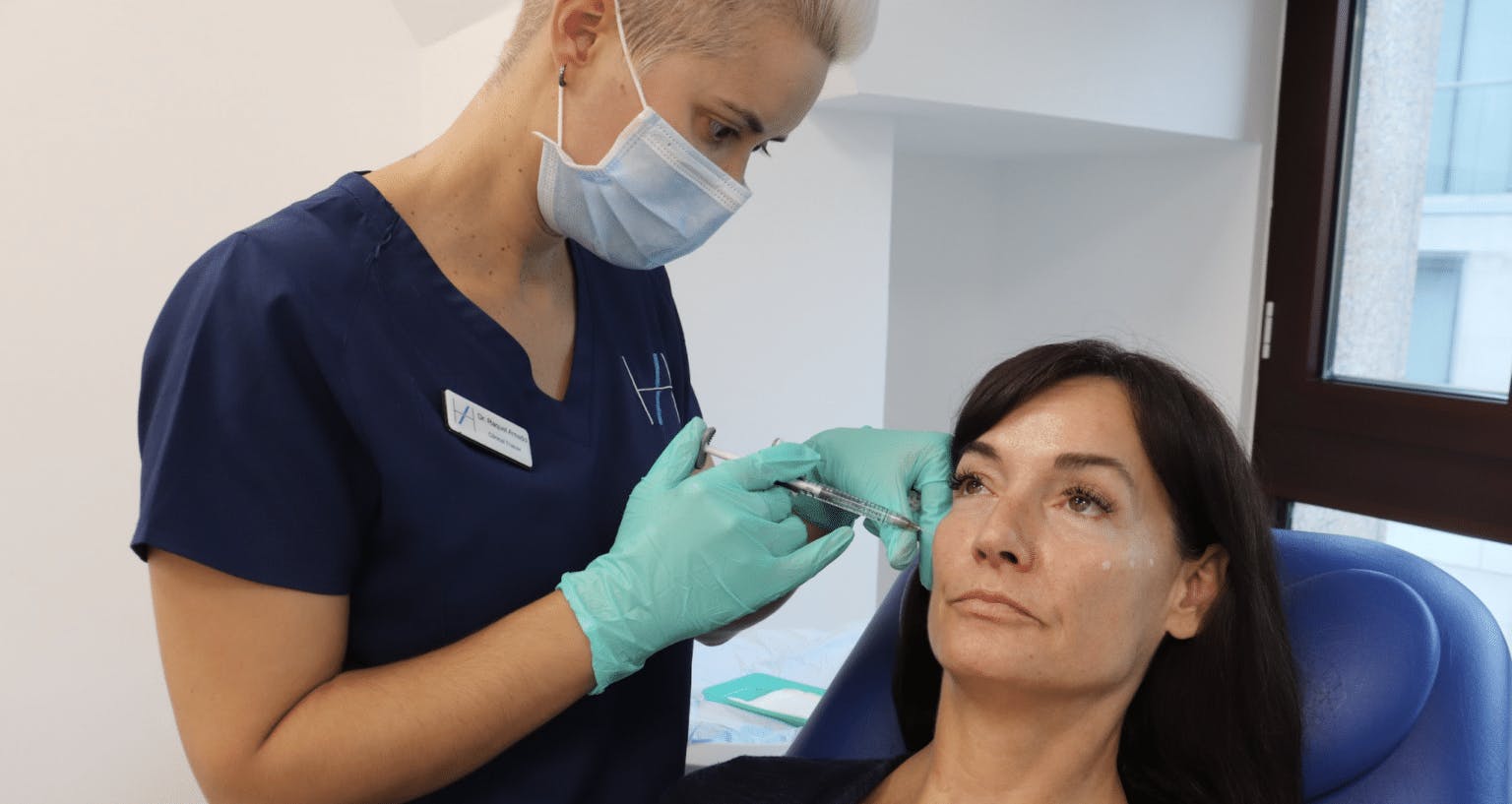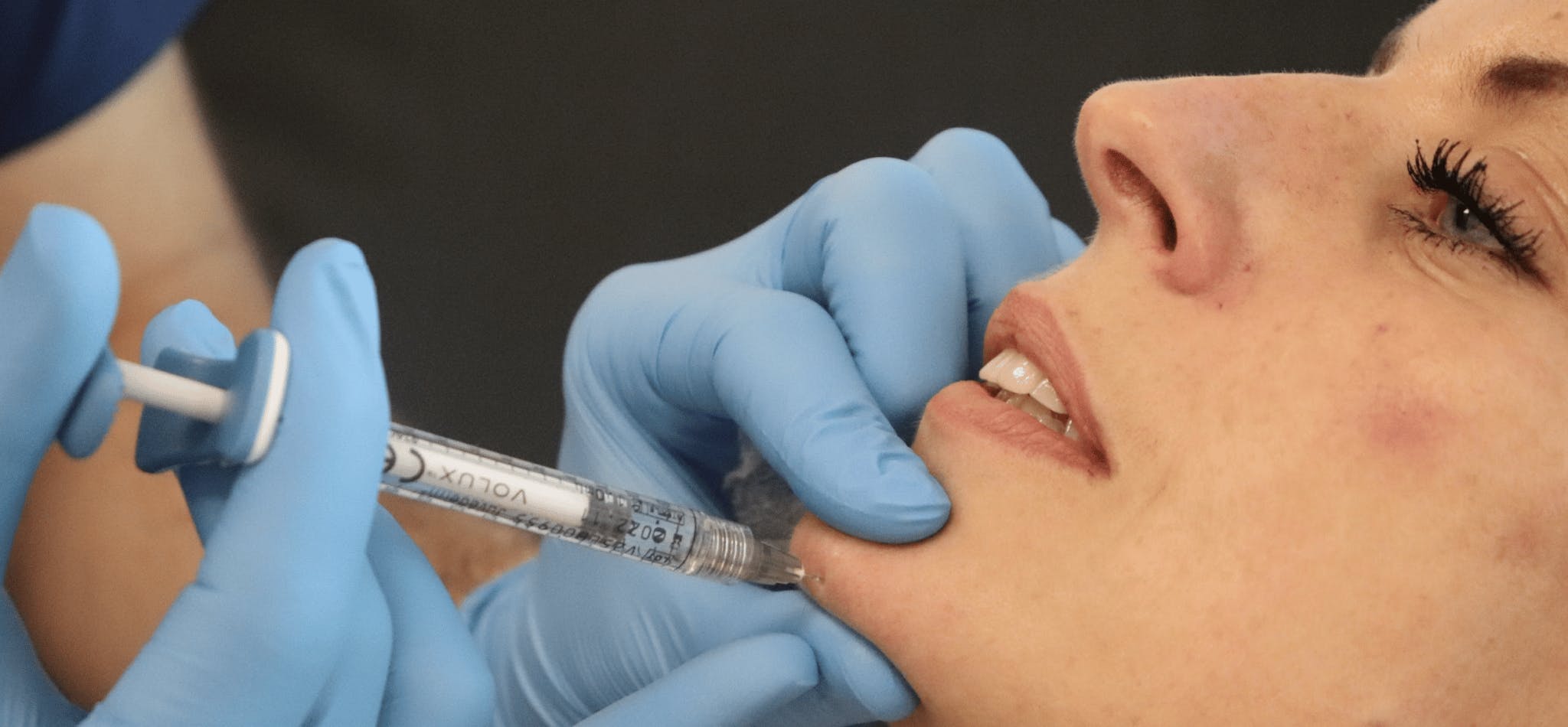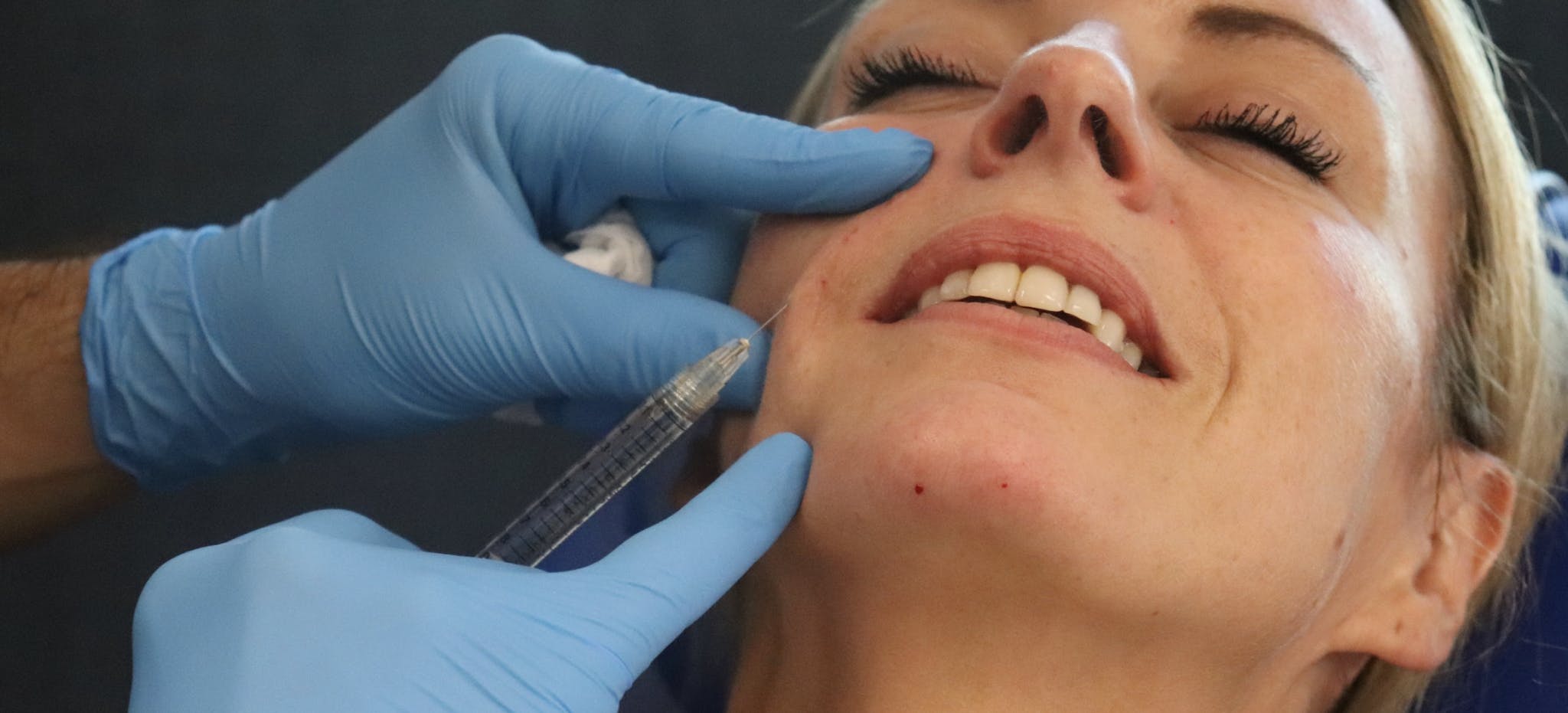How to Combine Filler Treatments for a Liquid Facelift

How do you know you’re ready to start offering Liquid Facelifts? Here’s everything new injectors need to know about combining filler treatments for full-face rejuvenation. Plus, what order to perform them in.
Once you’re familiar with and confident in administering individual filler treatments, you can start to combine them. There are numerous benefits to doing this, including providing more holistic, potentially longer-lasting results.
Harley Academy’s Clinical Director, Dr Harriet Jenkins gives her expert advice on how to combine filler treatments for a Liquid Facelift.

WHAT IS A LIQUID FACELIFT?
“A Liquid Facelift is a non-surgical treatment using dermal fillers to restore volume loss. It is also used to rebalance facial proportions. Additionally, it can even augment certain facial features”, explains Dr Harriet.
“You’ll find this treatment is also referred to as Full Face Filler or Multi-Area Filler.”
In our experience, patients tend to shy away from the term ‘Full Face Filler’ as it conjures up an impression of over-filling. ‘Liquid Facelift’ and ‘Multi-Area Filler Treatments’ tend to be more popular names for the same service.
WHAT LEVEL OF SKILL AND KNOWLEDGE DO INJECTORS NEED TO ADMINISTER THIS TYPE OF TREATMENT?
Dr Harriet notes that “you need to be competent in facial assessment, treatment planning and treating multiple areas of the face.” Specifically, you should be especially familiar with “treatments to the mid- and lower face using a range of techniques.”
“Generally, you’d need knowledge of anatomy and the physiology of ageing. You also need an understanding of different dermal filler properties and their different indications,” she confirms.
Learn more about some of the most popular filler treatment combinations in our article, Understanding the Full-Face Filler Approach.

HOW DO YOU ASSESS YOUR PATIENT FOR A LIQUID FACELIFT?
Dr Harriet advises the best way to assess a patient is “by having a consultation to elicit ideas, concerns, and expectations of the treatment. This should be conducted alongside careful facial examination and assessment.”
She goes on to say that “this includes taking into account face shape, facial thirds and profile balance.”
Always ensure you leave enough time for a thorough clinical consultation, especially when you are just getting started in medical aesthetics. If you’re seeing a new patient or consulting for a treatment you are just starting to offer, always allow more time than you think you’ll need. Allow yourself wiggle room so you don’t need to rush.
Your consultation will define the entire direction of your treatment plan. As such, it’s crucial to spend as much time as is necessary to gather all the information you need. In general, the better your consultation, the better the outcome and the happier your patient will be!
WHEN THE GOAL IS VOLUME RESTORATION, WHERE DO YOU START?
“Always start with the mid-face,” directs Dr Harriet. “Restoring the largest areas of volume deficit and rebalancing facial proportions are always the foundations of this treatment.”
SHOULD A LIQUID FACELIFT BE COMPLETED IN ONE SESSION?
“You can complete your treatment plan in one session, but you don’t have to. Factors including time limitations, pain threshold and budget of the patient are all important,” says Dr Harriet.
She confirms that sometimes it’s best to split your treatment plan into two or more sessions. “For example, when treating the mid-face you may want to assess the results in a few weeks’ time. At this later stage, you may then decide whether you want to treat the tear trough area.”
Below you can watch a Liquid Facelift treatment demonstration by our founder, Dr Tristan Mehta.
WHAT TECHNIQUES DO YOU USE - OR AVOID - HERE?
“Always plan your treatment with safe techniques in regards to facial anatomy,” advises Dr Harriet.
“Your approach should be bespoke and based upon the patient’s needs,” she notes. “For example, when treating male versus female patients, you would need to alter your treatment plan in terms of volume and proportions.”
We asked about common mistakes new aesthetics practitioners tend to make when administering multi-area filler treatments. Dr Harriet advises, “Avoid underquoting the amount of dermal filler you’ll need in the initial consultation. You need to be realistic about the total amount needed and give yourself enough mls to work with.”

LIQUID FACELIFT TRAINING OPTIONS AT HARLEY ACADEMY
Safe administration of individual filler treatments is taught on all our injectables training courses.
However, specifically learning how to combine these for a more holistic approach is explored in our Level 7 Diploma in Botox & Dermal Fillers. This Master’s level course will boost your confidence and understanding on a deeper level. By teaching you the science, theory and practice of injectable treatments, you’ll learn how to put them together to offer Liquid Facelifts.
Additionally, our Cheeks, Mid-Face and Lower Face Filler Masterclass is highly focused on combining treatments for proportionate full-face rejuvenation. This includes hands-on experience in how to safely and effectively sculpt and contour using dermal filler.
For more information on our range of medical aesthetics training courses, reach out to our Courses team. Book a call to receive personalised advice on finding the best aesthetic medicine education for you.
All information correct at the time of publication.
Download our full prospectus
Browse all our injectables, dermal fillers and cosmetic dermatology courses in one document
By submitting this form, you agree to receive marketing about our products, events, promotions and exclusive content. Consent is not a condition of purchase, and no purchase is necessary. Message frequency varies. View our Privacy Policy and Terms & Conditions
Attend our FREE open evening
If you're not sure which course is right for you, let us help
Join us online or in-person at our free open evening to learn more
Our Partners














STAY INFORMED
Sign up to receive industry news, careers advice, special offers and information on Harley Academy courses and services

